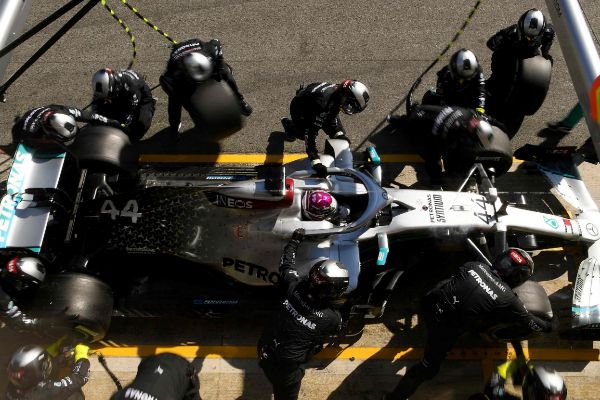The 2020 World Cup, the last before the regulatory revolution next season, is presented for many teams as a mere transition, with little evolution in aerodynamics and even less in engine mechanics. However, on the second day of official training, Mercedes has hit the table with a revolutionary DAS (Dual Axis System) system, which can be translated as Dual Axis Direction.
What is the DAS?
It is a mechanism, activated from the steering wheel, which allows to change the convergence of the front wheels with respect to the horizontal axis. In this way, the contact surface of the rubber decreases in the straight lines and increases in the curves. "It provides an extra dimension for the pilot that we hope will be useful during the year," said James Allison, technical director of the Silver Arrows.
How does it improve performance?
Mercedes did not want to offer more details about the advantages of its innovative system so as not to give clues to its adversaries. In any case it seems clear that their engineers intend to optimize the performance of their tires. By varying the angle of convergence, an attempt is made to minimize the usual heating of the rubber in the straight lines and maximize the grip during slow braking.
Is it a legal system?
The first thing that should be clarified here is that the teams are not obliged to comply with the regulations during the preseason. So Mercedes can try the DAS in Montmeló without fear of the hypothetical sanction that would await him in Australia, where the World Cup begins on March 15. At the moment, Allison claims to have received the approval of the International Federation (FIA). "We have talked with them. The regulations are quite clear about what is allowed in the management systems and we trust that the DAS meets all the requirements," said the British on articles 10.2.2, 10.2.3 and 10.4 .2 of the regulation.
How active?
The images of the morning session in Montmeló clarified the use of this ingenuity. When passing through the finish line, Lewis Hamilton approached the steering wheel towards his chest and when he reached the first corner he returned him to his starting position. This task, apparently simple, adds an extra point of demand for the pilots, forced to understand the dozens of functions that houses their steering wheel.
Can it be decisive?
Mercedes, at the forefront of the grid in the last five years, seems to have endorsed a hard blow in the morale of his opponents, forced from now on to work in record time to try to balance the situation. "It's fun to bring this kind of innovation, but it's just the tip of the iceberg," Allison warned. In the memory of the fans, those broadcasters who chose the 2009 World Cup for BrawnGP or the walrus of Williams in 2004, revolutionary at the time, although finally scrapped.
According to the criteria of The Trust Project
Know more- Formula 1
- sports
- Mercedes GP
Formula 1 McLaren sees its engine "on par with the Mercedes"
More sport Formula 1, MotoGP, the Olympic Games ... Sport, in suspense for the coronavirus
Formula 1 2019Ineos gets on the Mercedes

